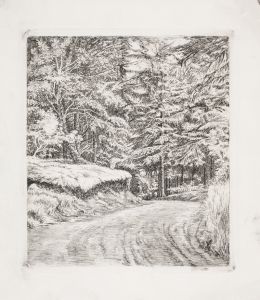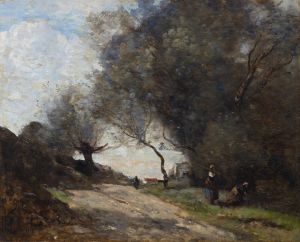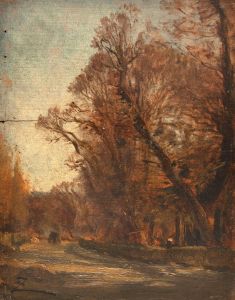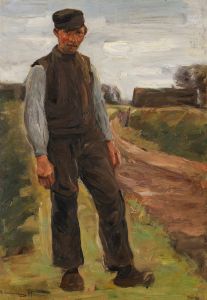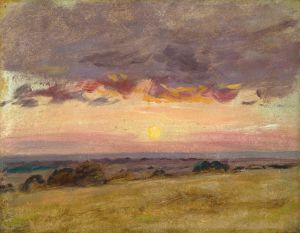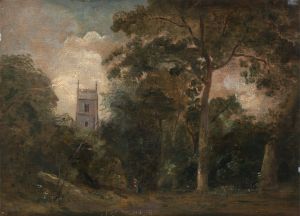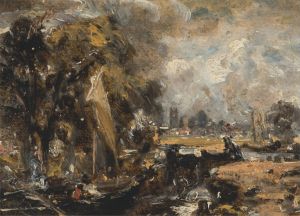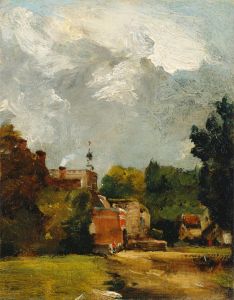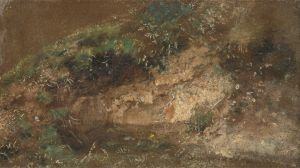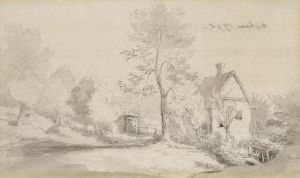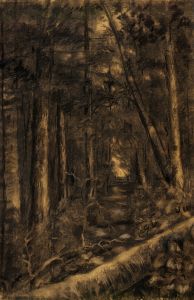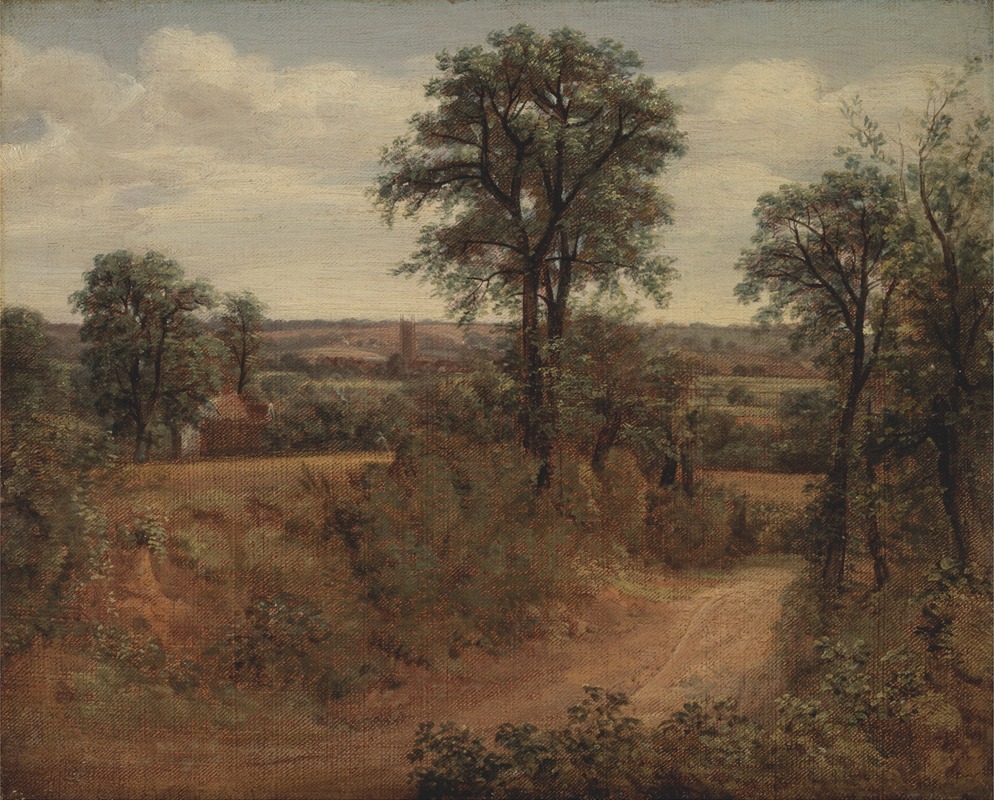
Lane near Dedham
A hand-painted replica of John Constable’s masterpiece Lane near Dedham, meticulously crafted by professional artists to capture the true essence of the original. Each piece is created with museum-quality canvas and rare mineral pigments, carefully painted by experienced artists with delicate brushstrokes and rich, layered colors to perfectly recreate the texture of the original artwork. Unlike machine-printed reproductions, this hand-painted version brings the painting to life, infused with the artist’s emotions and skill in every stroke. Whether for personal collection or home decoration, it instantly elevates the artistic atmosphere of any space.
"Lane near Dedham" is a painting by the renowned English artist John Constable, created in 1802. Constable, born in 1776 in East Bergholt, Suffolk, is celebrated for his landscape paintings that depict the English countryside with a remarkable sense of realism and attention to natural detail. His works are often associated with the Romantic movement, which emphasized the beauty and emotional power of nature.
"Lane near Dedham" is one of Constable's early works, painted when he was in his mid-twenties. The painting captures a rural scene near the village of Dedham, located in the heart of the Stour Valley, an area that Constable frequently depicted in his art. This region, known as "Constable Country," includes the picturesque landscapes of Suffolk and Essex, which were a significant source of inspiration for the artist throughout his career.
The painting illustrates a tranquil country lane bordered by lush greenery and trees, leading the viewer's eye towards the distant horizon. The composition is characterized by Constable's meticulous attention to the effects of light and atmosphere, which he achieved through his innovative use of color and brushwork. The sky, a crucial element in many of Constable's landscapes, is rendered with soft, diffused light, suggesting a serene, overcast day.
Constable's technique in "Lane near Dedham" reflects his dedication to capturing the natural world with authenticity. He often worked en plein air, or outdoors, to observe and record the changing effects of weather and light directly from nature. This approach allowed him to infuse his paintings with a sense of immediacy and vitality that was groundbreaking at the time.
The painting is also notable for its composition, which guides the viewer through the scene with a winding path that creates a sense of depth and perspective. This technique was influenced by the works of earlier landscape artists, such as Claude Lorrain and Thomas Gainsborough, whom Constable admired. However, Constable's unique ability to convey the specific character of the English countryside set his work apart and earned him a distinguished place in art history.
"Lane near Dedham" is housed in the Victoria and Albert Museum in London, where it remains an important example of Constable's early mastery of landscape painting. The museum's collection includes several of Constable's works, providing insight into his development as an artist and his enduring legacy.
John Constable's contribution to landscape painting cannot be overstated. His dedication to portraying the natural beauty of the English countryside with honesty and emotion has left a lasting impact on the art world. "Lane near Dedham" stands as a testament to his skill and vision, capturing a moment of rural tranquility that continues to resonate with viewers today.





